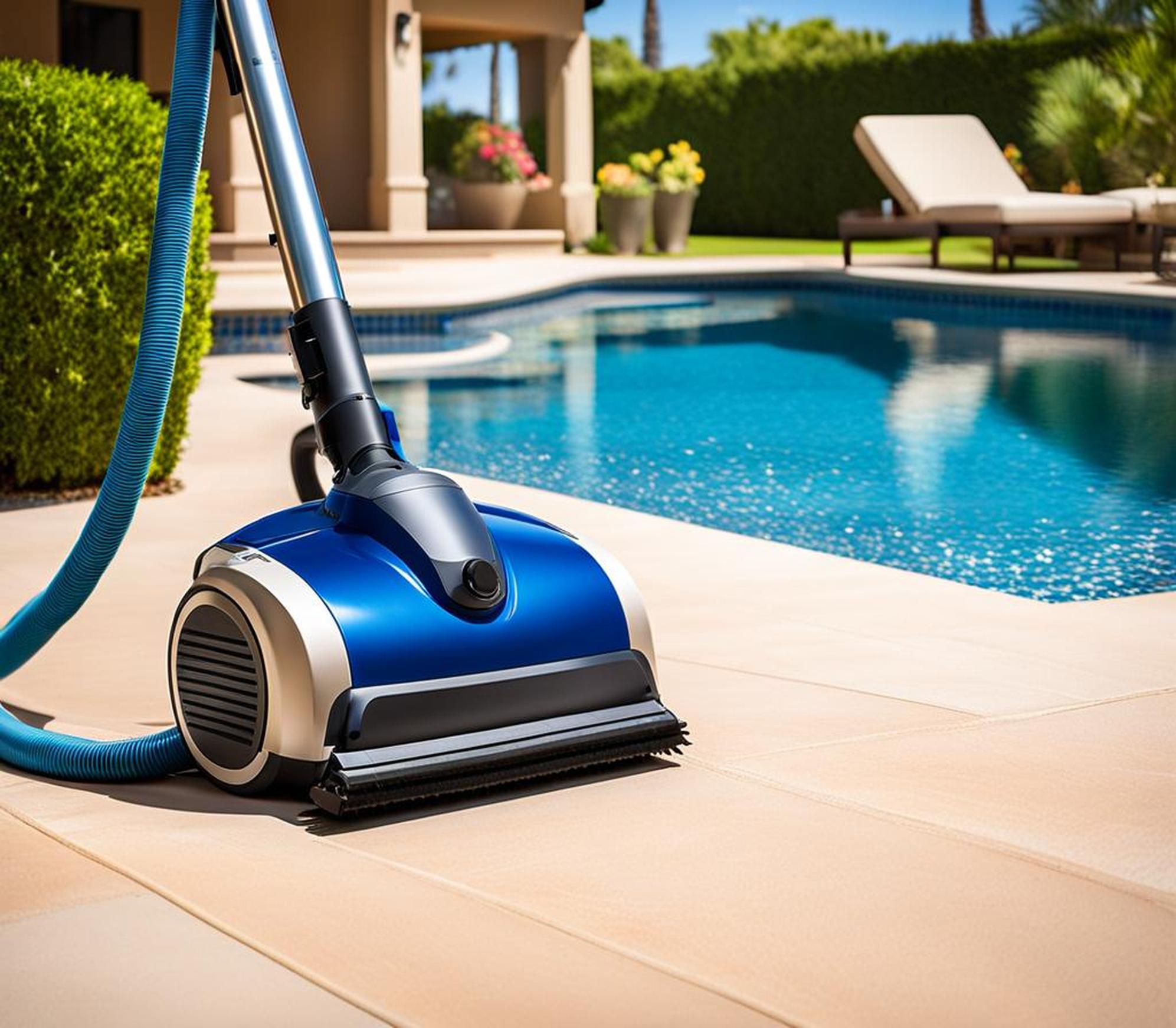The vacuum relies on this science to produce forceful suction for cleaning. By connecting the vacuum hose to the dedicated vacuum line or skimmer box, the pressure of the moving water creates a vacuum inside the hose. The suction then draws water and debris up into the hose.
To maximize the venturi effect, use a hose with a diameter of 1.5 inches or less. This narrow opening accelerates the water speed, amplifying suction power. Wider hoses dilute the effect.
Understanding how your pool vacuum harness water flow is key for effective debris pickup. ## Assemble Your Pool Vacuum Setup Before starting, you’ll need to assemble the components of your vacuum system. Standard equipment includes: – **Telescopic pole** – Adjust this to the desired length to easily maneuver the vacuum head around the pool. Extend it to reach the furthest parts of the pool. – **Vacuum head** – This removable cleaning head has wheels and bristles to scour surfaces. The suction pulls water and debris up through the head and hose. – **Hose** – A flexible vacuum hose connects the vacuum head to the skimmer or dedicated vacuum line. This creates the water flow needed for suction. – **Hose connections** – Adapters allow you to attach the hose to the skimmer box or vacuum line. Use a threaded cuff for a tight seal. Once assembled, place the vacuum head in the water and move the telescoping pole to ensure smooth functionality. Adjust the hose to provide enough length to reach all areas yet allow free movement. ## The Vital Vacuum Head The removable vacuum head performs the hard work, scrubbing away debris and transferring it into the hose through suction power.
Its bristled surface dislodges dirt, leaves, and other debris from pool surfaces. Plastic wheels underneath allow the head to smoothly glide along the floor, walls, and steps.
As the bristles scrub, the vacuum pulls water through the head. This water flow carries the loosened debris up the hose for disposal. The suction comes from the venturi effect explained earlier.
The bristles are soft enough to avoid scratching vinyl liners. However, they can be replaced with a gentler brush head to prevent liner damage. The simple but clever vacuum head is vital for effectively loosening and removing all traces of debris from your pool. ## Hose Tips and Connections The hose is the pathway that carries dirty water from the pool into the filtration system. This key component comes in a few varieties: ### Hose Types – **Vinyl** – Most common type. Flexible and maneuverable. Prone to kinks. – **Non-kink vinyl** – Plastic helix reinforcement prevents kinks. Easier handling. – **Metal** – Rigid for excellent suction but heavy. Requires a swivel to maneuver. Consider pool size and your strength when choosing a hose type. Flexible vinyl works for most home pools. ### Hose Connections – **Cuff connector** – Threaded plastic connector secures hose to skimmer or vacuum line. – **Adapters** – Allow connection between hose and vacuum head or skimmer. – **O-ring seals** – Provide leak-proof seal between connections. Inspect the connections periodically for cracks which can cause leaks and loss of suction. Also check O-rings for deterioration and replace if worn. ## Filtration System Must-Knows As debris travels through the hose into the pool filtration system, a filter basket catches and collects the gunk. Checking and emptying this regularly is key for proper operation.
This filter basket is located along the suction side of most pool pump systems. When turned on, water gets pulled through the basket, trapping leaves, dirt, bugs, and other debris.
Over time, the basket fills up with particles and debris. When it gets too full, water flow through the pump gets restricted. This will reduce the vacuum suction power.

